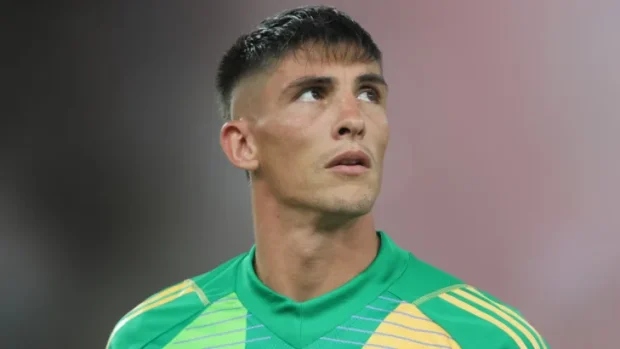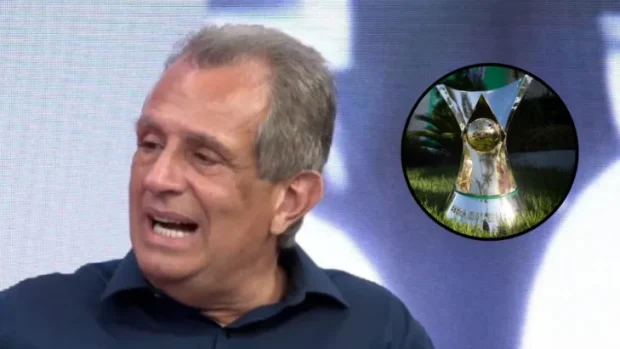When Jannik Sinner broke Carlos Alcaraz’s serve at the beginning of the third set of their French Open final on Sunday afternoon, it looked as though both men would head for an ice bath far earlier than expected.
Sinner, the men’s world No. 1, had just won his 20th straight set at Roland Garros. He needed just one more to win his fourth Grand Slam title, his first at the French Open. On the other side of the net was a player who had never won a match after being two sets down in eight attempts.
Advertisement
Sport rarely makes sense, so instead, just over three hours later, Alcaraz was summoning the strength to lift the Coupe des Mousquetaires high above his head, leaving Sinner to ponder how a match that he had been a single point away from winning — three times — had escaped him.
For the rest of the world, it was a moment to sit back and simply wonder how they played such high-quality tennis for five and a half hours, saving their best for the final two games before Alcaraz went stratospheric in the match tiebreak to clinch the title.
“The preparation for the final starts as soon as the semi finishes,” says nutritionist Mark Ellison, who worked with Andy Murray around 2012-2013, and has also worked with Manchester United and GB Boxing.
“Rule of thumb is that we’re looking to replace 1.5 times the amount of fluid lost in the previous match. If you have a two percent deficit, we’ll be looking to put 1.5 times that back in, because you’re always going to pee some of it out.
“Then we’ll be looking at some big carbohydrate intake: one gram to 1.5 grams per kilo of bodyweight straight away. Repeat that every hour until the next ‘normal’ meal.”
Murray favored sushi to quickly replenish his carbohydrate stores, eating up to 40 pieces after a match (spicy tuna and avocado rolls with spicy mayo preferred). Most players also use carbohydrate-rich electrolyte drinks and shakes with carbohydrate and protein to try to repair the damage to their muscles during a match.
“Tennis is pretty brutal, especially on clay,” says Ellison, “so as well as recovering from a fueling point of view, you’re also trying to manage muscle damage and repair.
“In the 24 hours between semifinal and final, you would want 5 to 8 solid feeds. As a practitioner, your job is to make that volume feel as normal as possible, which is why we hide a lot in drinks, sauces, desserts and high-energy snacks.”
Advertisement
Hydration-wise, the secret is in the sweat. There are few stones left unturned in monitoring how much a player sweats in every condition imaginable, as well as analyzing the composition of that sweat. Some players’ teams travel to tournaments with temperature and humidity gauges, which can be set up on court during practice sessions to assess the environment and thus understand the best hydration strategy. Court conditions are pivotal in determining how much fluid a player loses and how best to replenish it.
“If it’s a cool day, it can be very minimal, but it can go right up to two or three litres per hour, and that’s not easy to replace,” Ellison says.
“It doesn’t matter if you get a bit dehydrated, but the cutoff is around two percent. If your dehydration goes beyond two percent, that’s when it starts to affect concentration and, as you go down that sliding scale, it will start to affect endurance, strength and power.”
Knowing an athlete’s electrolyte requirement allows nutritionists to make up bespoke drinks, as opposed to providing off-the-shelf sports drinks, which can be a bit cautious when it comes to electrolyte content.

Carlos Alcaraz and Jannik Sinner after the French Open final. (Dimitar Dilkoff / AFP via Getty Images)
During an epic match of the sort played on Sunday, a 75kg male player could use around 4,000 calories. But even before the final, it’s likely they are already a bit depleted when it comes to carbohydrate stores after two weeks of matchplay every other day. An average-sized athlete can store 400g of glycogen in their muscles, another 100g in the liver, and around 10g to 30g in fluids (blood sugar), totaling around 530g of glycogen. But it’s a challenge to eat enough carbohydrate to fill that store.
The recommendations for athletes are to eat 6-10g of carbohydrate per kilogram of bodyweight per day, but Ellison says most athletes don’t realise how difficult that is: “Often you’re coaching people and seeing they are missing those numbers. When you’re trying to hit those big numbers, you’re likely going to have to add in liquid carbs alongside meals because you can’t hit them with pasta — you’d be stuffed.”
Advertisement
Alcaraz has said that his pre-match go-to meal 90 minutes before is a plate of mixed pasta — some with and some without gluten — and a cocoa cream called Ambrosia that has olive oil and dates in it. Then, immediately before the start, he has a bar made up of dates, egg whites and guarana. Sinner goes for a more basic chicken and rice meal or a ham and cheese sandwich, depending on the time of day he’s playing.
One helpful aspect of tennis is the frequent opportunities the players have to top up during a match. “Most are getting between 30 and 60g per hour during a match,” says Ellison, depending on their individual strategies and what they can tolerate. “Often that’s through gels, bananas, drinks, bars or carb shots.”
One additional drink both players were thought to be consuming during Sunday’s final is pickle juice. It’s a concentrated source of electrolytes, containing sodium and potassium. The taste is not for everyone, but consuming it has been found to stop cramping 40 percent faster than drinking water.
It is thought that drinking pickle juice activates receptors in the mouth, which trigger a reflex that disrupts messages to the brain that a muscle is cramping, but more research is needed to establish this. According to Dr Mayur Ranchordas, a senior lecturer in sport nutrition and exercise metabolism at Sheffield Hallam University, it’s particularly effective as a treatment for cramps in warmer conditions, or when sporting occasions last longer than anticipated — such as the second-longest Grand Slam final in history.
The physical demands of playing elite tennis for such a long time are immense. The USTA Player and Coach Development team reported in 2022 that the distance covered during a typical Grand Slam match is just two to three miles because of the court’s size, but those miles are far more demanding than in most other sports.
“Compared to other athletes, tennis players accumulate workload at the highest frequency, registering one unit for approximately every seven to eight feet covered on the court,” said the USTA. The sharp movements and abrupt changes of direction that define tennis points make the sport “one of the most demanding in the world in terms of acceleration and deceleration.”
Alcaraz and Sinner hit 1,433 ground strokes between them during their five-set epic, with Sinner gaining the edge on shorter points of zero to four shots (108-95) and Alcaraz doing the same on longer ones (97-84). In the Spaniard’s tiebreak surge, eight of the 12 points played were five shots or longer. Alcaraz won seven of them. Pressure points in tennis — break points, set points, match points, and points in longer games such as 30-30, 40-40, and Ad-40 — skew longer on average than others. Alcaraz ultimately benefited from his sporting edge meaning more in the biggest moments.
Advertisement
Both men will have felt the impact of such volume and intensity. A 2013 study into the physiological and performance variables of male tennis players during a three-day tournament and the following two-day recovery period found that a tennis tournament causes such a heavy load for the legs, in addition to muscle damage, that the recovery of explosive attributes of leg extensor muscles remains impaired after two days of rest.
Mentally, there will be recovery time required, too. Perhaps more so for Sinner, who does not have the high of the victory to help ease his tired body and mind. “It hurts, yes,” the Italian said in his post-match interview.

Jannik Sinner after losing the French Open final. (Julian Finney / Getty Images)
Performance coach and psychologist Jamil Qureshi, who has worked with 22 golfers in the top 50 in the world, including two world number ones, as well as Premier League clubs and Ashes-winning cricketers, said the key will be to “reframe” what happened in the final.
“How can we see something in a way which gives us the best opportunity to be better, to change the outcome next time?” he says.
Whoever lost Sunday’s match was destined to manage a new, unpleasant sporting experience: going in, both Sinner and Alcaraz had a 100 percent record in Grand Slam finals. Alcaraz is now 5-0; Sinner is 3-1.
How long that recovery might take is hard to say. “It’s relative to the individual,” says Qureshi.
“Sinner will have a good support network around him who will help him reframe and see things differently. Time will help with that, as will looking back at videos, analyzing the match. If he’s of the mindset to do so, which I’m convinced he will be, he’ll allow this to further his career.”
In his post-match interview, Alcaraz focused on the belief that allowed him to fight back from the brink of defeat: “I just believe all the time. I have never doubted myself. Even though in those match points down, I thought just one point at a time. Just one point, and then after one point, try to save that game and keep believing. That’s what I thought.”
Advertisement
By the time the fifth-set tiebreak came around, few believed either player would be able to elevate themselves to another level, but that’s precisely what Alcaraz did, racing to a 7-0 lead before eventually winning it 10-2. The winning shot was an incredible forehand down the line that left everyone watching open-mouthed in awe.
That tiebreak was simply Alcaraz playing how he is capable of playing, says Qureshi. “Every now and then, this great clarity comes over a player – people call it being in the zone – when they are energized, purpose-driven, focused, able to think clearly under pressure. That’s how people can play all the time.
“His subconscious mind knows more about tennis than his conscious mind ever will. If you can play subconsciously, then it’s amazing how it can transform your talent.”
With just three weeks separating their historic match in Paris from the start of the next Grand Slam at Wimbledon, both players will be doing whatever it takes to recover physically and mentally from their exertions. Alcaraz’s traditional post-French Open jaunt to Ibiza, Spain, is likely a different approach to Sinner’s.
Whether the rapid turnaround will prove better for a Sinner looking to move on quickly than an Alcaraz wanting to celebrate a little longer, only Wimbledon and its grass can prove.
(Top photo: Carlos Alcaraz after winning the French Open; by Alain Jocard / AFP via Getty Images)
This news was originally published on this post .








Be the first to leave a comment